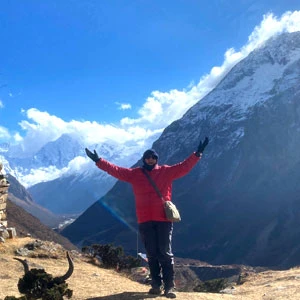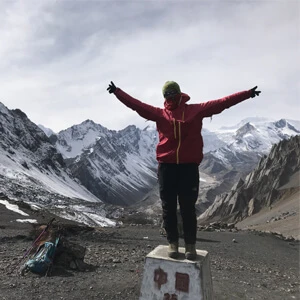Langtang Valley Trek Overview
If you are looking for a Himalayan trekking adventure in Nepal that’s close to Kathmandu, the Langtang Valley Trek is a gem. Just about 145 km north of Kathmandu in the Rasuwa district, this trail sits right on the border with Tibet. That means within a day’s drive, you will reach Syabrubesi, the gateway village to the Langtang valley. From there, you step straight into a world of towering peaks, lush forests, and vibrant Tamang culture.
The whole trek lies inside Langtang National Park, which is home to everything from rhododendron and bamboo forests to high alpine meadows and yak pastures. You will walk alongside glacial rivers and through villages like Lama Hotel, Langtang Village, Mundu, and finally Kyanjin Gompa, a stunning high-altitude settlement wrapped in mountains. Along the way, you will witness langurs, Himalayan birds, and even musk deer if you are lucky.
Your Langtang journey starts from Syabrubesi after a 6 to 7-hour drive from Kathmandu, winding through terraced hills, river valleys, and rural villages. The ride may be bumpy, but the views of Ganesh Himal and rolling green ridges more than make up for it. Once you hit the trail, you will start walking alongside the Bhote Koshi and Langtang Khola rivers. The path climbs gradually through dense forests of oak, bamboo, and rhododendron until you reach Lama Hotel, a quiet little stop surrounded by nature.
From Lama Hotel, the trekking trail keeps ascending, and soon the forest opens up into wider valleys. This is where you start catching those first big glimpses of Langtang Lirung (7,227 meters) dominating the skyline. Passing through Chhunama and Pering Kharka, you will eventually reach Langtang Village. While in this village, you will find a memorial site that is dedicated to all the lives that were lost during the 2015 earthquake in Nepal. Moving forward, the trail continues to Mundu and finally into Kyanjin Gompa, the heart of the trek. Nestled at over 3,800 meters, it’s a beautiful highland village with a centuries-old monastery, prayer wheels spinning in the wind, and of course, the famous yak cheese factory that’s a must-try.
From Kyanjin, you will climb up Kyanjin Ri (4,400 meters) for sunrise, and even then, the next day, trek to Tsergo Ri (4,984 meters). Both viewpoints deliver jaw-dropping panoramas of Langtang Lirung, Yalla Peak, Langshisha Ri, and the glaciers spilling down the valley. After soaking in the mountains and the crisp alpine air, the journey retraces its steps back down through Langtang Village, Lama Hotel, and finally to Syabrubesi.
Here, the Langtang region is largely inhabited by the Tamang community, who share deep cultural and historical ties with Tibet. You will notice it in the Tibetan-style architecture, mani walls carved with prayers, and the rhythm of life that feels both spiritual and deeply rooted in nature.
Festivals here bring that culture to life. Lhosar, the Tamang New Year, usually falls in February or March and is celebrated with music, dance, and gatherings that mark renewal and good fortune. Buddha Jayanti, which falls on the full moon of May, honors the birth of Lord Buddha with prayers, butter lamps, and ceremonies in monasteries like Kyanjin Gompa. If your trek lines up with either of these, it’s an unforgettable cultural experience.
What Makes The Langtang Valley Trek Unique In 2025/2026?
Yak Cheese Factory at Kyanjin Gompa, Langtang
If there’s one thing you absolutely shouldn’t miss on the Langtang Valley Trek in Nepal, it’s the famous Yak Cheese Factory at Kyanjin Gompa. This little high-altitude village is also the cheese capital of the Himalayas. Here, tucked away at nearly 3,900 meters, locals have been perfecting the art of making yak cheese since the 1950s, when Swiss experts first introduced modern techniques to complement traditional Himalayan methods. Here, you will find tangy, earthy, nutrient-rich cheese that tastes completely different from anything you will find in the city.
The secret of the cheese in Kyanjin lies in the milk. Technically, the milk they use for the cheese comes from the nak, the female yak, whose milk is incredibly rich and creamy. From there, the process is both simple and fascinating: curdling, pressing, and aging, all done with a mix of tradition and skill. Once you step into the factory, the first thing that greets you is the warm, slightly sweet aroma of fresh cheese. If you are lucky, you might catch the cheesemakers in action, stirring curds in giant vats, pressing wheels into molds, or telling stories about how yak cheese became such an important part of Langtang’s culture.
For locals, this yak cheese is a huge part of their livelihood. The factory sustains families in Kyanjin Gompa and nearby villages, keeping traditional practices alive while giving trekkers like you something unforgettable to taste. So, while in Kyanjin, you can try the cheese on its own or try it with other dishes like a spread on chapati, or even buy some to carry back as a trekking snack.
Kyanjin Ri Hike (4,400 Meters)
If you are spending a night or two in Kyanjin Gompa, the side trip you absolutely can’t skip is the Kyanjin Ri hike. Sitting at 4,400 meters, it’s one of the most popular viewpoints in the Langtang Valley Trek as it offers jaw-dropping Himalayan scenery on a half-day adventure. The hike begins right from Kyanjin Gompa (3,830 meters) and usually takes 2 to 4 hours, depending on your pace and fitness.
The trail itself is straightforward, consisting of a steady, often relentless climb with rocky ridges that can feel slippery, especially if the weather turns. Still, the effort is more than worth it, because the moment you reach the top, the mountains open up in a panoramic sweep.
To the northwest, you will stand face-to-face with the towering Langtang Lirung (7,227 meters) and its massive glacier. If you shift your gaze a little, you will spot Changbu (6,251 meters) and Yubra (6,264 meters). To the northeast, you will see Yalla Peak (5,500 meters), while across the valley to the southwest, the dramatic Tsergo Ri (4,984 meters) rises high. And if that’s not enough, the south offers views of Naya Kanga (5,844 meters) and the rugged Kangja La Pass. It’s a full 360° spectacle of the upper Langtang Valley, complete with glacial moraines, alpine ridges, and untouched high-altitude landscapes.
For this hike, you must start the journey early in the morning while the skies are still crisp and clear, as it will offer you the best light for photography and also help to avoid the clouds that usually roll in by afternoon. It’s also an excellent acclimatization hike if you are planning to push higher up to Tserko Ri (4,984 meters) the next day.
Hike to Tsergo Ri Viewpoint (4,984 Meters)
Tsergo Ri (4,984 meters) is the true high point of the Langtang Valley Trek in Nepal. Rising around 1,000 meters above Kyanjin Gompa, the trail is steep, relentless, and demanding, but the reward is nothing short of breathtaking. From the summit, you get a 360° panorama of the Langtang Himalaya, with giants like Langtang Lirung, Yala Peak, Langtang Ri, and Naya Khang surrounding you in every direction.
This hike starts right from the center of Kyanjin Gompa and winds its way up past yak pastures, prayer flags, and old stone yak sheds. You will often see Tamang herders with their yaks grazing. The trail consists of vertical ascent, which means, some of the sections are brutally steep in parts. Additionally, the trail also dips in and out of rocky ridges and open high-altitude landscapes, so trekking poles and solid footwear are necessary.
If you are planning to hike this viewpoint, you must aim to summit it before midday. Mornings usually bring clear skies and golden light; however, afternoons bring dark clouds. And once you have conquered the climb, it is important to understand that the descent is just as intense. Therefore, you must take it slow, stay hydrated, and give yourself enough rest stops.
Once at the summit of Tsergo Ri, you will find colorful prayer flags and poles, fluttering against the backdrop of snow peaks and glaciers. On a clear day, it feels like you are standing on the roof of the Langtang Valley, with the entire world stretched out below.
Side Trip to Langshisha Kharka (4,285 Meters)
If you are looking for one of the most rewarding side trips in Langtang Valley, Langshisha Kharka should be high on your list. Sitting at 4,285 meters, this remote alpine meadow feels like stepping into another world, raw, quiet, and untouched. It lies to the east of Kyanjin Gompa, and unlike the popular hikes to Kyanjin Ri or Tsergo Ri, this one is about immersing yourself in wilderness rather than chasing summits. The vast meadow spreads out under the shadow of Langshisha Himal (6,807 meters), where glaciers spill down into rivers that glisten through the valley.
If you are trekking to Langtang during Spring and Summer, you will witness a natural alpine garden, dotted with colorful flowers and echoing with the soft bells of yaks grazing in the meadows. This is also where nomadic herders set up their temporary camps. Wildlife thrives here too; you might spot Himalayan tahr, musk deer, or exotic birds that make this one of the best birdwatching spots in Langtang.
The hike itself is a steady ascent from Kyanjin Gompa, weaving through forests, rocky trails, and open pastures until the mountains suddenly open up into this vast, secluded plain. While the trek isn’t technically difficult, the altitude and long walking hours demand stamina. Facilities are basically non-existent here, and you will not find any tea houses, shops, or proper shelters, apart from seasonal yak-herder huts with the bare minimum. Therefore, most trekkers return to Kyanjin Gompa the same day, which means you should start early and carry enough snacks, water, and warm layers.
Jaw-Dropping Langtang Himalaya Views
One of the biggest reasons the Langtang Valley Trek in Nepal is so unforgettable is the sheer variety of Himalayan views you get along the way. During this trekking journey, the peaks start teasing you early and only get bigger and bolder as you climb higher. From lush forests and river valleys, the scenery shifts into wide alpine meadows, where yaks graze under the towering Langtang Lirung (7,227 meters), and by the time you reach Kyanjin Gompa, it honestly feels like you have walked straight into a mountain amphitheater.
Tsergo Ri (4,984 meters), also called Cherko Ri, might just be the finest viewpoint in the Langtang region, offering a jaw-dropping 360° sweep of snowcapped giants like Langtang Lirung, Langshisha Ri (6,427 meters), Dorje Lakpa (6,988 meters), and even parts of the Ganesh Himal range. Kyanjin Ri is another must-climb ridge in Langtang Valley for its panoramic perspective of glaciers and surrounding peaks. Even on the meadows near Kyanjin Gompa, you can stand in silence and watch yaks grazing against a backdrop of sparkling glaciers.
Now, if you are lucky enough to have a clear night, the Langtang sky puts on its own show. You will get to witness the Milky Way arching over jagged Himalayan peaks. It is one of those moments you will never forget. Sunrise and sunset are pure magic here too, with the mountains catching fire in shades of gold and crimson. That’s why Autumn (September to November) is considered the best time for the Langtang Valley Trek: crystal-clear air, sharp visibility, and landscapes bursting with color.
Wildlife & Nature in Langtang National Park
If you are a nature lover or a wildlife enthusiast, Langtang National Park is an absolute treat. Nestled within the Langtang Valley, this protected area is a biodiversity hotspot, blending dense forests, alpine meadows, glacial peaks, and sparkling rivers. Trekking here offers you some of the breathtaking views of the mountains, hidden wildlife, and lush landscapes.
Along the way, you might witness some of the Himalayas’ rarest creatures. The elusive Red Panda, Himalayan Tahr, Snow Leopard, Musk Deer, Himalayan Black Bear, and even wild dogs (dhole) roam these forests and high-altitude pastures. Spotting them is a challenge, but that’s what makes it thrilling.
Similarly, Langtang is also home to over 250 species of birds, including the stunning Himalayan Monal (Nepal’s national bird), pheasants, woodpeckers, and raptors. Spring and early Autumn are the best times to catch them in action. Meanwhile, the forests themselves are spectacular with rhododendrons bursting into vibrant colors if you are trekking in March to May. Likewise, bamboo groves near Lama Hotel, and towering fir, oak, hemlock, larch, and sal trees line the lower trails.
Moving on, the high-altitude meadows near Kyanjin Gompa, like Langshisha Kharka, are another highlight, offering wide-open vistas with yaks grazing and snow-capped peaks towering overhead. If you are trekking in Summer, you will see colorful alpine flowers like primroses, gentians, and blue poppies, while Winter transforms the trails into serene, snow-covered landscapes with frozen rivers.
Local Tamang Culture & Tibetan Traditions
During your trek to the Langtang Valley, Nepal, you will also get to know the Tamang community. These are the main people living in the valley, and their very name, “Tamang,” translates to horse warriors, a nod to their proud Tibetan ancestry. Their culture is this fascinating mix of Tibetan Buddhism, Animism, and Shamanism, and it’s woven into every aspect of daily life.
The Tamang community primarily speaks their own Tibeto-Burman language, Tamang, though Nepali and a bit of English are common in trekking hubs. Walking through villages like Lama Hotel, Langtang, and Kyanjin, you will notice traditional Tibetan-style homes made of stone and wood, colorful prayer flags, mani walls, and chortens marking sacred spaces.
If your timing is right, you could witness one of the valley’s vibrant festivals. Lhosar, the Tamang New Year. It is a joyful affair filled with dancing to Tamang Selo music, often accompanied by the Damphu, a small drum. Similarly, you may also witness Buddha Jayanti, which celebrates the birth of Lord Buddha, while the Dumje Festival at Kyanjin Gompa features masked dances honoring Guru Rinpoche. There’s also Chyamgi Puja, the Horse Festival, which pays tribute to the Tamangs’ warrior heritage.
Ideal Trekking Route For Beginners, Families, & All Age Groups
If you have been dreaming of a Himalayan trek but worry it might be too tough, the Langtang Valley Trek in Nepal is honestly one of the best options out there. Just 145 km from Kathmandu, you can reach the starting point, Syabrubesi, in a few hours by bus or private vehicle, which means less time traveling and more time soaking in the mountains. With an average duration of around 11 days, it’s perfectly suited for first-time trekkers, families, and even senior citizens.
The trek itself is gentle yet rewarding. You will cover daily distances of 5 to 12 km, which gives you plenty of time to rest, enjoy the views, and acclimatize. The trails are well-marked, and there’s no technical climbing required, so you won’t need mountaineering gear or experience. If you also want a little extra adventure, you can take optional side hikes like Tsergo Ri or Kyanjin Ri.
Accommodation here is also comfortable, with tea houses and a few 3-star lodges along the way. Meals are hearty, and the warm Himalayan hospitality ensures you feel at home. The gradual elevation gain makes it safe for beginners, while acclimatization stops at Kyanjin Gompa help prevent altitude sickness. Families with kids will also love the wildlife, rhododendron forests, and cultural interactions in Tamang villages, making it educational and fun. Similarly, senior trekkers can go at a slower pace, take more breaks, and even hire porters for extra support.


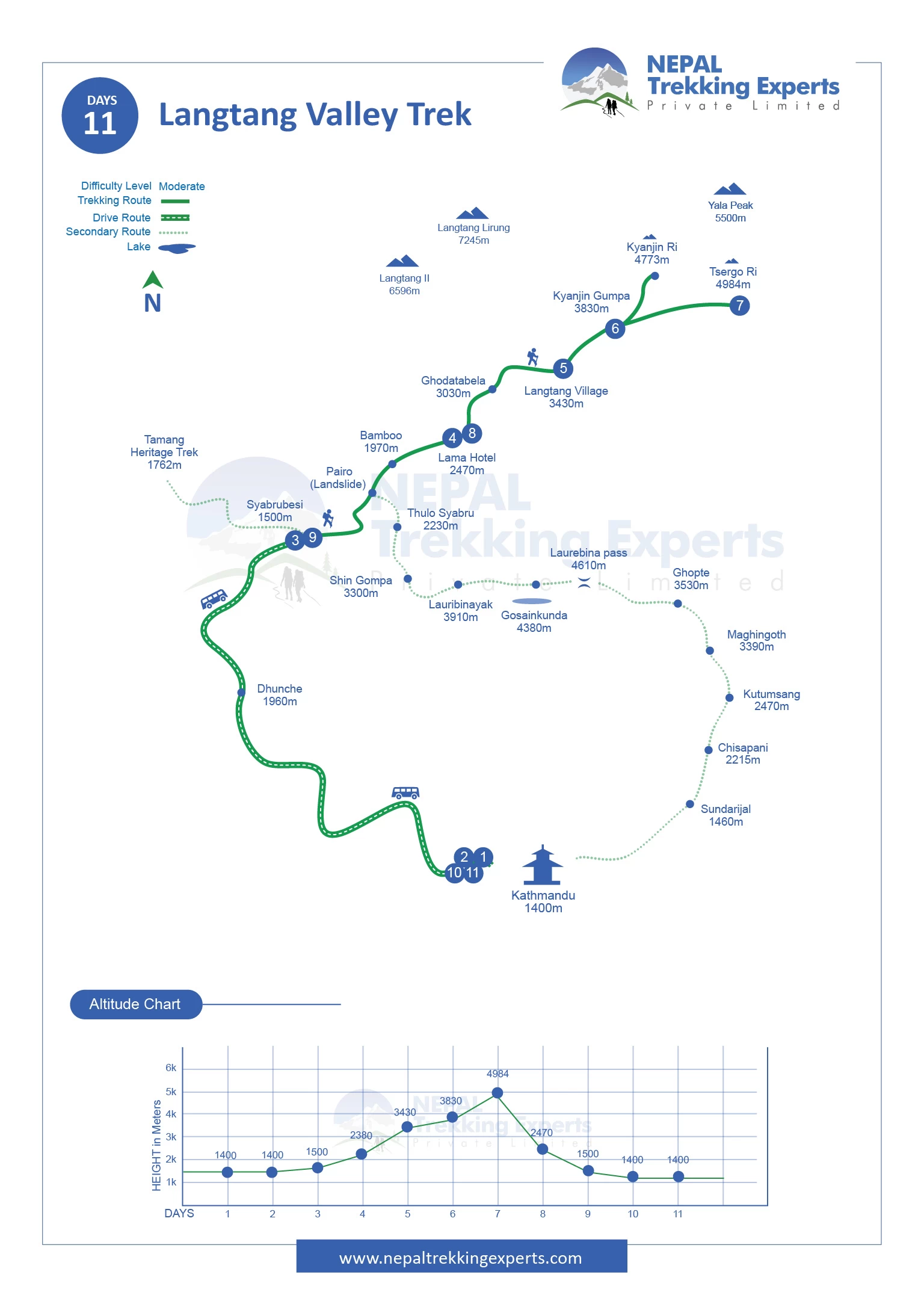

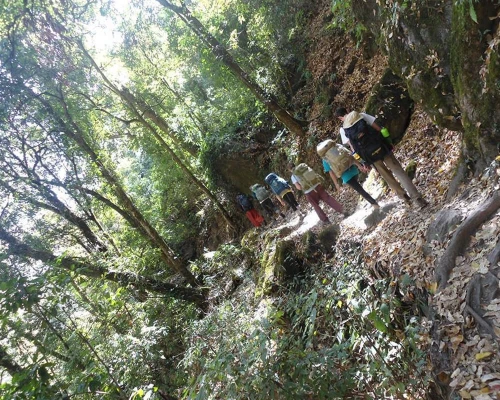
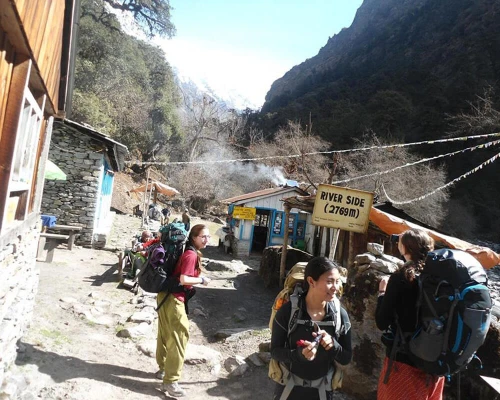
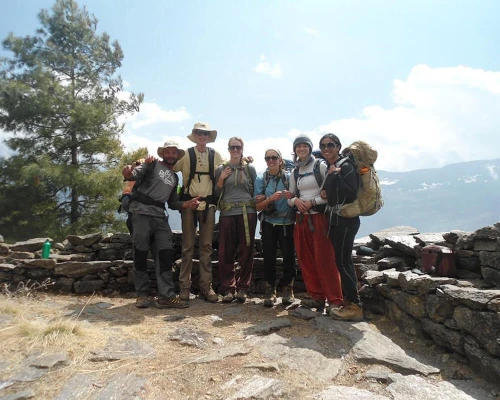

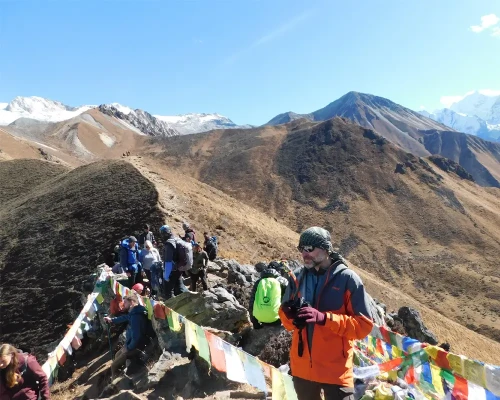
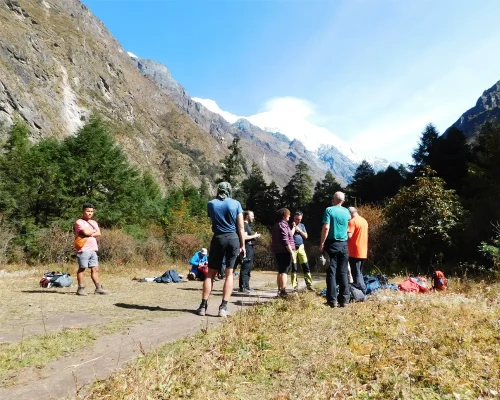

 based on 10 reviews
based on 10 reviews
.webp)



